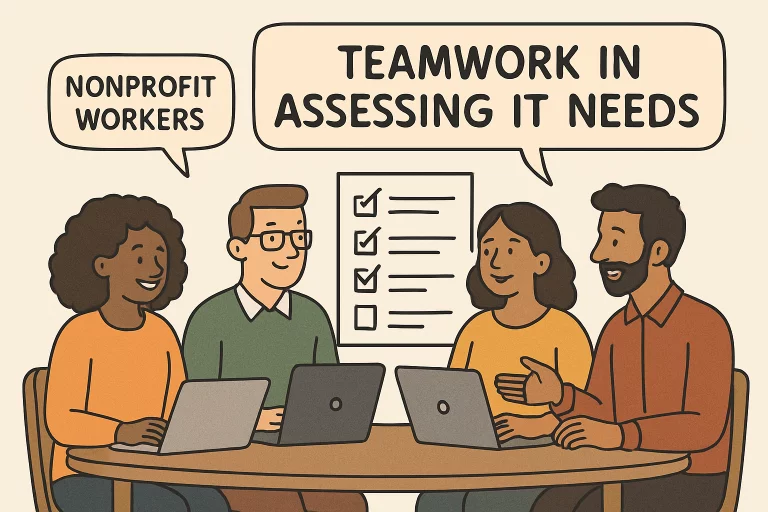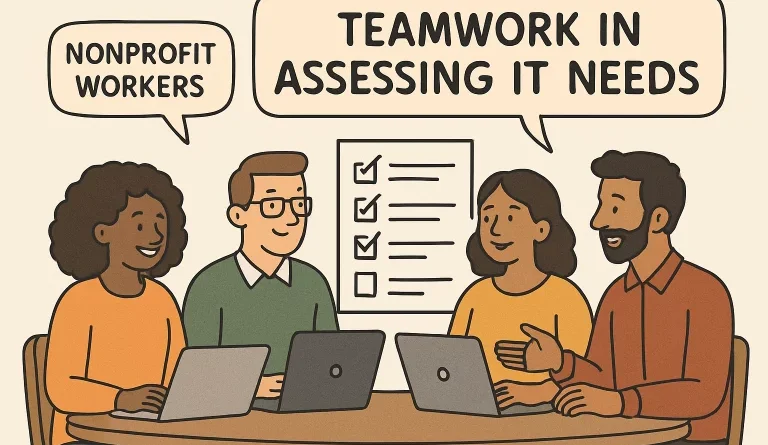Building Effective IT Strategies for Nonprofit Organizations
Nonprofit organizations face the ongoing challenge of maximizing their mission impact while managing limited financial and human resources. Information technology plays a pivotal role in this equation: if deployed thoughtfully, it can transform how nonprofits operate, deepen relationships with supporters, and open up new avenues for growth and innovation. By strategically aligning IT initiatives with the core mission and daily operations, nonprofits can create a foundation for success and resilience in a rapidly evolving digital environment. Collaborating with an experienced partner, such as designDATA Non profit IT, can help organizations make informed decisions, navigate complex challenges, and stretch valuable resources further.
Developing and implementing an effective IT strategy allows nonprofits to expand their services, streamline internal processes, and safeguard their most sensitive data—all while keeping costs under control. The steps outlined below provide a practical roadmap for building a modern IT infrastructure that effectively supports the unique needs and aspirations of any nonprofit organization.
Assessing Current IT Infrastructure
The first, and arguably most critical, step in shaping a strong IT strategy is conducting a thorough and honest assessment of your organization’s current technology environment. This process goes beyond simply listing devices and software; it demands an in-depth evaluation of all digital assets, including computers, servers, peripheral devices, networking equipment, and core software applications. Consider the connectivity and reliability of your network, the responsiveness of your systems, and the robustness of your cybersecurity defenses. Identify recurring issues, such as frequent downtime, slow computers, or obstacles that make remote work difficult, as these pain points can dramatically impact both internal efficiency and program delivery.
It is essential to gather diverse perspectives from various stakeholders during this assessment. Staff members who interface with technology daily possess valuable insights—whether it’s about outdated tools slowing their work, redundant platforms that are never used, or cumbersome processes that waste precious time. Their feedback can often pinpoint efficiency gaps or barriers to success that aren’t obvious from a technical standpoint. This holistic approach ensures that future technology investments are laser-focused on making a quantifiable difference throughout the organization.

Common Areas for Review
- Outdated computers or servers that hinder productivity
- Redundant or unused software licenses that waste resources
- Connectivity issues that impact remote work or the delivery of critical programs
Identifying and understanding these issues upfront ensures that every dollar spent on technology upgrades or replacements yields measurable improvements to your nonprofit’s mission and daily results.
Developing a Clear IT Strategy
With a comprehensive assessment in hand, your next task is to develop a technology strategy that is intentional, actionable, and tailored to your nonprofit’s goals. Start by defining your organization’s highest objectives—these may include expanding into new communities, enhancing services, increasing donor engagement, or achieving compliance with data privacy regulations. The IT strategy should represent a direct extension of these priorities, articulating how technology will enable or accelerate the achievement of these goals.
Your strategy must include a set of short- and long-term goals, each with defined milestones, timelines, required resources, and accountable staff. For every technology decision, from evaluating new fundraising software to selecting collaboration tools, weigh both the direct impact on your operations and the potential to indirectly advance your mission. For example, adopting a comprehensive CRM may transform your organization’s ability to manage relationships and boost fundraising, while collaborative cloud-based tools can help remote teams work seamlessly and creatively. By approaching each decision through the lens of greater mission impact, you anchor IT as a value creator rather than a cost center.
Leveraging Cloud-Based Solutions
Cloud computing is a game-changer for nonprofits of every size. Migrating key systems and operations to cloud-based platforms enables organizations to vastly reduce upfront investment in physical hardware and minimize the complexity of maintaining on-premises systems. The inherent scalability of cloud services ensures nonprofits can add or remove users as needed, supporting growth spurts or seasonal changes in staffing. Additionally, cloud solutions simplify both routine software updates and long-term data storage, freeing up IT staff to focus on more strategic initiatives.
A wide range of technology providers offer discounted or grant-funded access to cloud tools specifically designed for nonprofits, making this migration even more appealing. Whether accessing productivity suites, cloud-based storage, or specialized databases, leveraging these programs provides access to cutting-edge resources while keeping costs manageable. Furthermore, transitioning to the cloud inherently supports remote work environments—a growing need in today’s flexible and distributed workforce landscape.
Benefits of Cloud Adoption
- Lower upfront infrastructure investments and ongoing maintenance costs
- Increased agility to quickly scale up or down as organizational needs change
- Enhanced opportunities for collaboration across teams, locations, and even continents
Prioritizing Data Security
Nonprofit organizations often handle a significant amount of sensitive data, including donor and financial records, confidential case files, and volunteer lists. Because of this, implementing advanced and multi-layered security protocols is absolutely essential. Data breaches or cyberattacks can not only disrupt your programs but also erode hard-earned trust with beneficiaries and supporters. Best practices include robust firewalls, end-to-end encryption, regular software updates and patches, and multi-factor authentication.
Equally important is the human factor—many security incidents can be traced back to well-meaning but untrained employees. A proactive approach means investing in ongoing cybersecurity training for all staff, equipping them to recognize phishing attempts and other evolving threats. Frequent security audits, scheduled password changes, and regular reviews of access rights help ensure that your nonprofit’s digital assets remain protected as roles and responsibilities evolve. Staying vigilant in this area is key to preserving your organization’s reputation and operational resilience.
Investing in Staff Training
The true value of technology is only realized when your team has the skills and confidence to leverage it fully. To this end, investing in continuous, hands-on staff training is essential. These sessions should go beyond the basics: empower staff to maximize the value of each application, improvise solutions, and even propose creative ways technology can advance the mission. By making technology training a routine, rather than an exceptional part of professional development, organizations can foster a proactive culture of innovation.
Consider designating departmental “power users” who can serve as informal in-house tech mentors, answer colleagues’ questions, and help quickly resolve common issues. This peer-to-peer approach accelerates adoption and fosters a supportive environment where technology feels like an enabler, not an obstacle. When the entire team is confident and competent with key tools, nonprofits experience improved productivity, morale, and a higher overall return on investment in IT.
Monitoring and Evaluating IT Performance
Continuous improvement is at the heart of an agile and responsive IT strategy. Set clear, quantifiable metrics—such as reduced downtime, improved donation processing, higher satisfaction scores for technology, or more efficient data management—to measure ongoing performance. Regularly survey employees and program participants to gather candid feedback regarding what’s working, what’s falling short, and where support is needed.
Institutionalize quarterly or semiannual IT reviews, using them to assess system health, document evolving needs, and celebrate progress. These check-ins help nonprofits stay ahead of emerging risks and evolving technology trends, enabling them to plan for the future rather than merely reacting to immediate needs. Through routine monitoring and regular adjustments, nonprofit leaders ensure that their technology tools remain continuously aligned with changing strategic priorities.
Conclusion
Building an effective and sustainable IT strategy is essential for nonprofits seeking to maximize their impact while efficiently managing their resources. By conducting a thorough assessment, setting ambitious yet grounded goals, and making informed investments in cloud solutions, training, and security, organizations can establish a robust technology foundation that enhances every aspect of their mission. Nurturing internal skills, forging constructive partnerships, and regularly evaluating progress empower nonprofits to stay ahead of the curve. In today’s fast-changing world, a thoughtful technology strategy isn’t just a “nice-to-have”—it’s a critical differentiator, enabling your nonprofit to innovate, adapt, and continue delivering positive change for years to come.
Visit the rest of the site for more interesting and useful articles.

